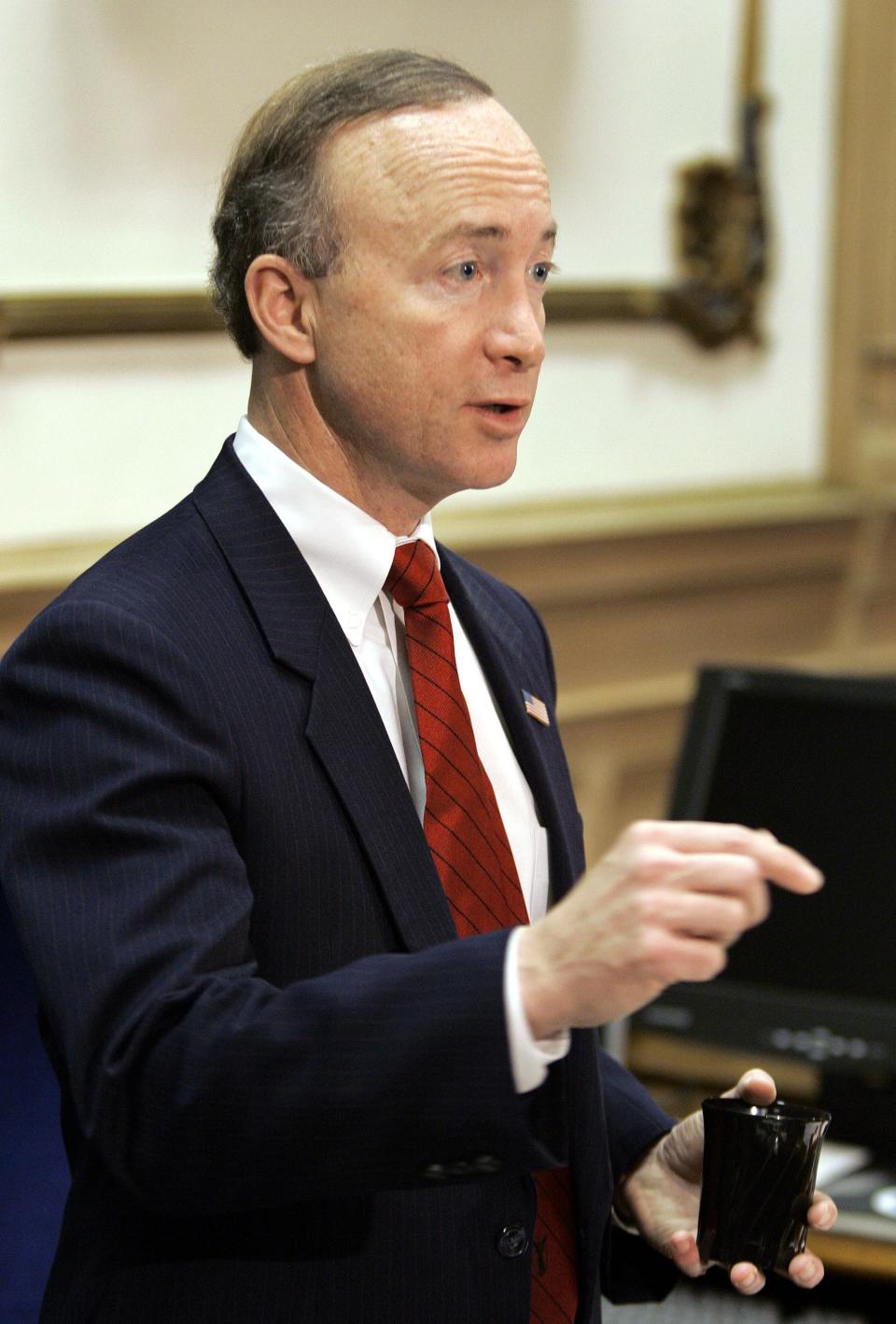Looking back at Indiana's complicated relationship with time: Why Indiana observes daylight saving time
Good news, Hoosiers! The time has come for longer days and (hopefully) warmer temperatures.
That's right. Daylight saving time has returned, and soon the entire state will be "springing forward" and getting used to that hour of sleep they lost.
The big time change happens at 2 a.m. Sunday. At that time, 2 a.m. will instantly become 3 a.m.
Daylight saving time:Everything you need to know
But Indiana's relationship with time has always been complicated, and depending on who you ask, all the wrinkles haven't been ironed out of the statewide DST model we've used for the past 13 years.
Here's a look at how we got here, according to IndyStar archives.
The way it was
Indiana spent decades taking a “do what feels right” approach to time. In the late 1800s, it was as simple as using the sun as your guide. It was noon when the sun was the highest, and people lived their lives between sunrise and sunset.
But the emergence of railroads and the need to coordinate clocks so folks didn’t miss their trains led to the creation of “standard time” and four time zones in 1883.
In 1917, Congress passed the Standard Time Act, adopting similar time zones and giving the Interstate Commerce Commission authority over the boundaries. The law also ushered in "daylight saving time" for a few years before the concept was repealed by Congress in 1919.
But Indiana’s “do what feels right” attitude held strong. Some communities went along with the repeal, and other communities continued to follow it.
IndyStar has brought you the news for 116 years. Help us keep doing it.
The years that followed also led to Indiana’s eventual time zone spilt. From 1918 to 1961, the Indiana/Ohio border served as the dividing line between the Eastern and Central time zones. But the Interstate Commerce Commission shifted the dividing line west and cut the state in half in 1961.
That era would also see a controversial Indiana time zone bill outlawing daylight saving time — but lacking enforcement power — come and go in 1947. In 1957, a vote to make Central Time the official time zone of Indiana was ignored and ultimately repealed with the Interstate Commerce Commission’s time zone shift in 1961.
In 1966, Congress shifted authority over time zones to the Department of Transportation, and the agency came up with a compromise that put most of Indiana on Eastern Standard Time year-round while the Gary and Evansville areas would remain on Central time and follow daylight time in the summer.
After some back and forth and one General Assembly override of a Gov. Edgar Whitcomb veto, the federal idea was approved by Indiana and signed into law by President Richard Nixon in 1972. That compromise would hold strong for more than 30 years.
Mitch’s major move

After being elected Indiana Governor in November 2004, Mitch Daniels pushed for the adoption of statewide daylight saving time when he took office.
He made DST part of his economic plan and argued the “Indiana Time” compromise hindered economic growth because it was confusing for those outside of the state.
Daniels was able to gather support from key legislators, and in 2005, the Indiana General Assembly adopted SEA 127, which repealed the provision exempting portions of the state in the Eastern Time Zone from observing Daylight Saving Time.
It was a slim victory that saw the bill be voted down in the House not once but twice. The margins of defeat, however, were not large enough to sink the legislation.
Squeaking out a win
In April 2005, SB 127 failed to obtain a majority vote and was defeated 50-49 in the House of Representatives. Still eligible for a revote, three House Republicans switched their positions the second time around and provided a path for the daylight saving time bill to move to a conference committee vote in the Senate.
The bill survived a narrow vote in the Senate and went back to the House for a final vote on the version adopted by both the House and Senate conference committees. The legislation would again fail in its first trip to the House with a 49-48 vote.
But because there weren't 51 "nay" votes, the matter was brought up for a second vote and finally passed 51-49 after a group of legislators changed their minds.
Beginning on April 2, 2006, Indiana became the 48th state to observe daylight saving time statewide. We now set our clocks back an hour in the fall to Eastern Standard Time and ahead one hour in the spring to Eastern Daylight Time.
Six counties in the northwestern corner and six counties in southwestern portion of the state are on Central Time. Those counties switch between Central Standard Time and Central Daylight Time.
Call IndyStar reporter Justin L. Mack at 317-444-6138. Follow him on Twitter: @justinlmack.
This article originally appeared on Indianapolis Star: Why Indiana observes daylight saving time statewide

